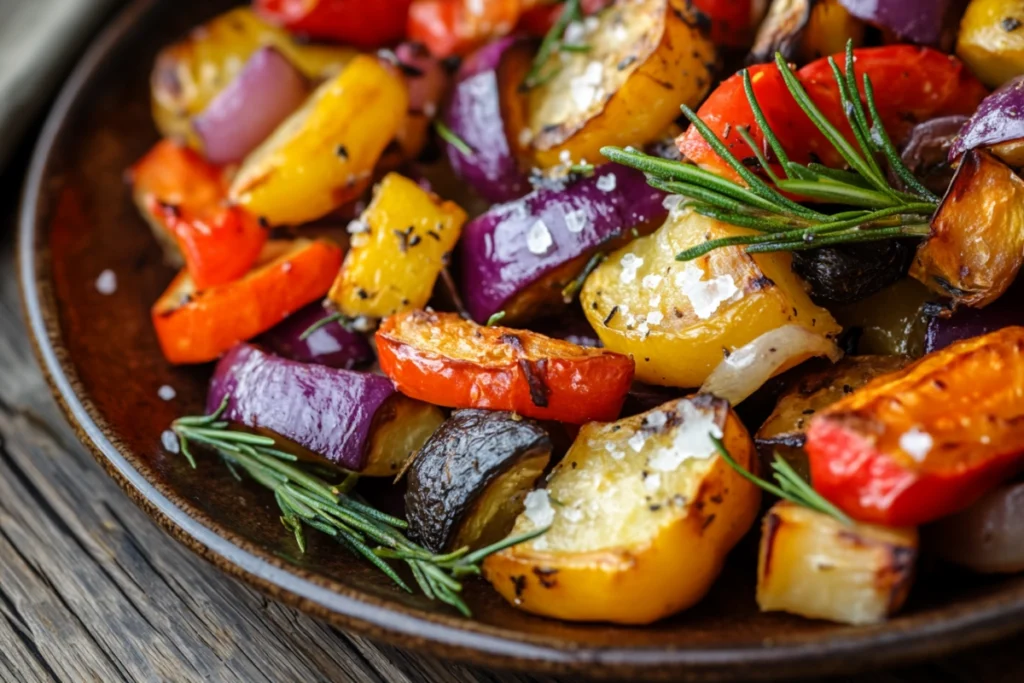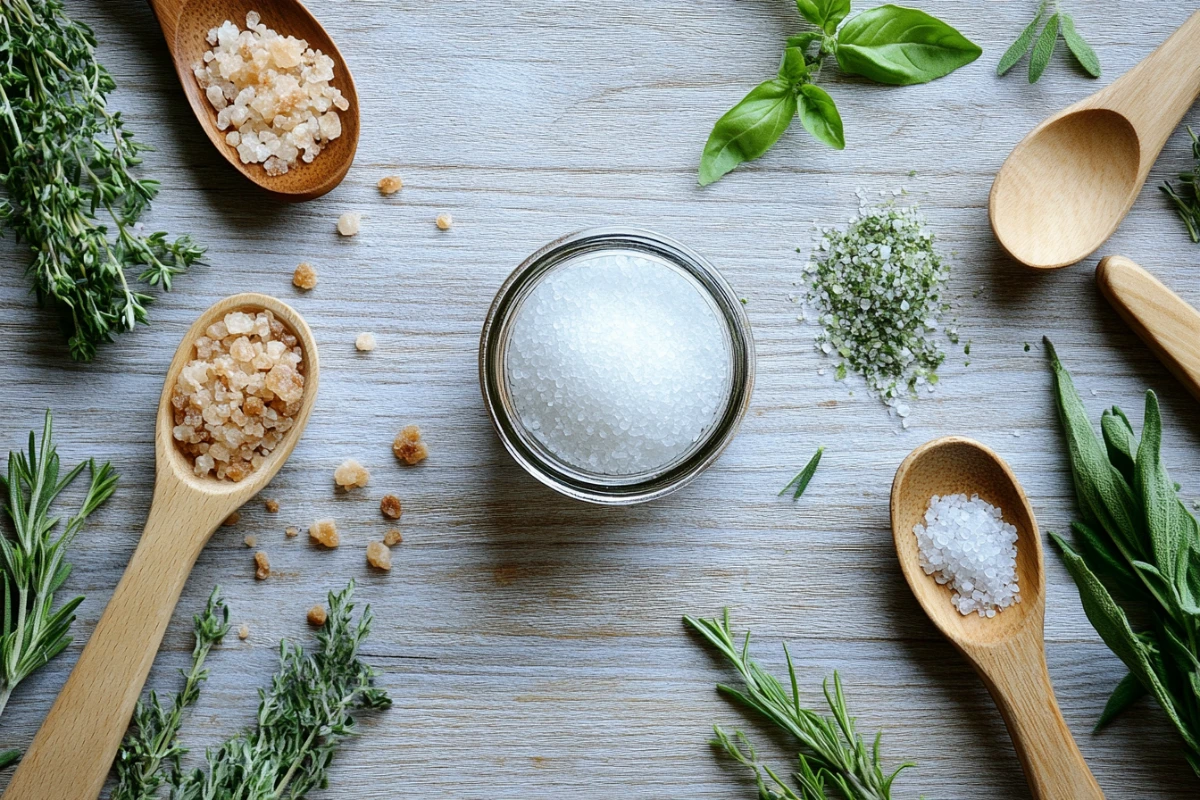Fleur de sel, or “flower of salt,” is more than just a seasoning; it’s a culinary treasure revered worldwide. Harvested with care from shallow seawater pools, this delicate, flaky salt embodies the essence of artisanal craftsmanship. But what exactly is fleur de sel in English? This article dives deep into its origins, unique qualities, and culinary uses, offering insights into why this premium salt is cherished by chefs and home cooks alike. From its painstaking harvesting process to its role as a finishing touch on gourmet dishes, we’ll uncover what makes fleur de sel so special.
Let’s begin with a closer look at what fleur de sel means and how it came to be.
Introduction to Fleur de Sel
What Does Fleur de sel Mean in English?
The phrase “fleur de sel” translates directly to “flower of salt” in English, and its name perfectly captures its delicate, crystalline appearance. Unlike regular table salt, fleur de sel isn’t just mined or evaporated in bulk. Instead, it forms naturally as a fragile crust on the surface of shallow seawater pools under specific weather conditions. The crystals resemble tiny blossoms, hence the name.
This rare salt is traditionally harvested in coastal regions of France, particularly in Brittany. The unique combination of climate, mineral-rich seawater, and artisanal methods results in a product that’s as much a work of art as it is a seasoning.
Historical Context and Origins of Fleur de Sel
Dating back centuries, fleur de sel has its roots in ancient salt-making traditions. In regions like Guérande and Camargue, salt farmers—known as paludiers—used wooden rakes to gently skim the salt crystals from the water’s surface. This labor-intensive process reflects a deep respect for nature’s rhythms and a commitment to preserving traditional techniques.
Historically, fleur de sel was considered a prized possession, reserved for royalty and nobility due to its scarcity. Over time, it gained recognition worldwide as a symbol of culinary refinement. Today, while still expensive, it’s more accessible, appearing on menus and in kitchens everywhere.
Why It Matters
Fleur de sel isn’t just a fancy addition to your pantry—it’s a testament to craftsmanship, history, and nature’s artistry. In the next part, we’ll explore how this salt is harvested and why its production methods make it so extraordinary. Stay tuned!
The Process of Harvesting Fleur de Sel

How French sea salt Is Made
Fleur de sel, which translates to “flower of salt” in English, is harvested with precision and care. Unlike standard table salt, this delicate salt forms as a thin crust on the surface of shallow seawater pools. The formation process is a result of specific weather conditions, including a perfect combination of sunshine, wind, and low humidity. These factors cause the salt crystals to bloom on the water’s surface, resembling tiny flowers.
Harvesters, often called paludiers, use traditional wooden tools to gently skim the crystals from the water. This method ensures that only the highest-quality salt is collected. As the crystals are so delicate, the process must be done by hand, making it labor-intensive but preserving the unique texture and flavor that define fleur de sel.
Traditional vs. Modern Salt Harvesting Methods
The process of collecting fleur de sel stands in stark contrast to industrial salt production. While most table salt is mined or evaporated in large quantities, fleur de sel relies on artisanal techniques passed down through generations. Traditional methods emphasize sustainability, with each harvest tied closely to natural environmental cycles.
Modern methods of salt production often involve large-scale operations using machinery, resulting in uniform but less flavorful salt. In comparison, the care taken to produce fleur de sel elevates it to a luxury status, prized by gourmet chefs worldwide.
For more insights into gourmet salts, you can explore related guides like this one.
Characteristics and Unique Qualities of Gourmet salt
What Makes Gourmet salt Different from Regular Salt?
Fleur de sel’s distinctiveness lies in its texture and taste. Unlike regular salt, which is often coarse or finely ground, fleur de sel is composed of fragile, flaky crystals. These crystals contain more moisture than typical salt, which allows them to dissolve slower, offering a prolonged burst of flavor.
Additionally, fleur de sel retains a trace of minerals from the seawater, which contributes to its subtle briny taste. This complexity makes it a preferred choice for finishing dishes rather than cooking, as it enhances flavors without overpowering them.
Texture, Moisture, and Flavor Profile
The high moisture content in fleur de sel creates its unique texture. This moisture allows the salt to stick together on the tongue, intensifying the sensation of saltiness. The crystals’ delicate nature also means they can add a slight crunch when sprinkled on dishes, enhancing both the taste and visual appeal.
In terms of flavor, fleur de sel provides a nuanced salinity. Unlike processed salts, which often have additives, it offers a natural, oceanic essence. This makes it a staple in recipes where subtlety and balance are essential. To learn more about the flavors and uses of this gourmet salt, check out this article.
Culinary Uses of Fleur de Sel

How to Use Gourmet salt in Cooking
Fleur de sel, known for its delicate texture and nuanced flavor, is best used as a finishing salt rather than during the cooking process. Sprinkling a pinch on dishes right before serving enhances flavors without overwhelming them. The salt’s delicate flakes dissolve slowly, creating a balanced and memorable taste experience.
This premium salt is a favorite for garnishing foods like roasted vegetables, grilled meats, and fresh salads. It also adds a pleasant crunch to baked goods, such as homemade bread or soft pretzels. If you’re looking to elevate your culinary creations, fleur de sel is the perfect ingredient to keep on hand.
For a sweet twist, try pairing fleur de sel with caramel or chocolate desserts. This combination of salty and sweet flavors brings out the richness of both ingredients. If you enjoy experimenting in the kitchen, fleur de sel can take your recipes to the next level.
Pairing Fleur de Sel with Sweet and Savory Dishes
One of the unique aspects of fleur de sel is its versatility. It works equally well in sweet and savory dishes. For savory recipes, it enhances the natural flavors of grilled fish, seared steak, or even simple avocado toast. In sweet dishes, it contrasts beautifully with creamy caramel, dark chocolate, or vanilla ice cream.
When using fleur de sel in recipes, it’s important to remember that a little goes a long way. Its concentrated flavor means you only need a small amount to make a big impact. For more inspiration, you can explore recipes on Medium Recipes to discover creative ways to incorporate gourmet ingredients like fleur de sel.
Global Variations of French sea salt
Gourmet salt from Around the World
Although fleur de sel originated in France, other regions have adopted similar techniques to produce high-quality salt. Countries like Portugal, Spain, and Greece are well-known for their own versions of hand-harvested sea salt. These salts vary slightly in flavor and texture depending on the local climate and water composition.
In Portugal, flor de sal is harvested along the southern coast, while in Spain, salt flats in regions like Mallorca produce their distinctive variety. These salts often share similarities with fleur de sel, making them excellent alternatives in recipes that call for the French version.
How Regional Differences Influence Flavor and Quality
The unique characteristics of fleur de sel, or its global counterparts, depend on several factors. The mineral content of seawater, local weather, and harvesting techniques all play a role in shaping the flavor and texture. For example, salts from warmer regions may have a slightly milder taste, while those from colder climates might carry a more pronounced briny note.
While fleur de sel remains the gold standard for many chefs, exploring regional variations can be a fun way to diversify your cooking. If you’re curious about how these salts compare, consider checking out recipes on Medium Recipes that highlight global ingredients and techniques.
Buying and Storing French sea salt
Where to Buy Authentic Fleur de Sel
Finding authentic fleur de sel is easier than ever, thanks to online stores and specialty shops. Many gourmet food retailers, both in-store and online, stock high-quality fleur de sel sourced from France. Look for reputable brands that specify the region of origin, such as Guérande or Camargue, to ensure you’re getting the real deal.
When purchasing, it’s essential to check for clear labeling. Avoid products that simply state “sea salt” without any mention of hand-harvesting or specific regions. Fleur de sel is a premium product, so its price will often reflect its quality. A small investment in this salt can significantly enhance your culinary creations.
If you’re new to using fleur de sel, smaller packages are a great starting point. They’re more affordable and give you the chance to experiment with its unique qualities.
Best Practices for Storing Gourmet salt
Once you’ve purchased fleur de sel, proper storage is key to maintaining its quality. Always keep it in an airtight container to prevent moisture from affecting the texture. Glass or ceramic jars with tight lids work best, as they protect the salt from humidity and light exposure.
Store the container in a cool, dry place away from heat or direct sunlight. This prevents the delicate crystals from clumping together or losing their distinctive texture. With proper care, fleur de sel can last for years, allowing you to enjoy its subtle flavors whenever inspiration strikes.
Health Benefits and Considerations
Nutritional Value of French sea salt
Fleur de sel, like other salts, contains sodium, which is essential for many bodily functions. However, what sets it apart is its natural mineral content. Because it’s harvested by hand and minimally processed, it retains trace elements like magnesium, calcium, and potassium, which contribute to its flavor and potential health benefits.
It’s worth noting that fleur de sel is not iodized, so it should be complemented with other sources of iodine in your diet. Using it as a finishing salt means you can enjoy its flavor in moderation, which aligns with general health guidelines for sodium intake.
Is French sea salt Better for You Than Regular Salt?
Compared to regular table salt, fleur de sel is often considered a healthier option due to its purity and lack of additives. Table salt typically undergoes refining processes and may contain anti-caking agents, which are absent in fleur de sel. Additionally, its intense flavor allows you to use less while still achieving a satisfying taste.
However, it’s important to remember that fleur de sel is still salt, and consuming it in excess can contribute to health issues like high blood pressure. By using it sparingly, you can enhance your dishes without compromising your health.
FAQs About Fleur de Sel
“What Makes This Gourmet Salt So Expensive?
Fleur de sel earns its reputation as a luxury product due to its labor-intensive harvesting process. Harvesters carefully skim it by hand from the surface of shallow seawater pools, a task that only succeeds under specific weather conditions. This precise method, paired with the limited areas where it is produced, explains its rarity and high cost. If you’ve wondered, “What is fleur de sel in English?” the term “flower of salt” beautifully describes its delicate, crystal-like appearance.
French sea salt Be Substituted?
Although fleur de sel has unique qualities, certain salts work as substitutes in recipes. Flake salts, such as Maldon sea salt, provide a similar texture and function well as finishing salts. However, these alternatives often lack the mineral richness and moisture content that give fleur de sel its distinct character. When a recipe calls for this gourmet ingredient, choosing the original can significantly enhance both flavor and presentation.
Creative Ways to Use Luxury Finishing Salt
Chefs often use fleur de sel as a finishing touch to elevate dishes. From enhancing the flavor of grilled meats to adding a crunchy contrast to desserts like caramel or chocolate, its versatility makes it a prized ingredient in high-end kitchens. To truly appreciate its unique characteristics, use it sparingly to garnish rather than mix into food during cooking.
What Are the Best Alternatives to French sea salt?
If fleur de sel is unavailable, other hand-harvested sea salts or kosher salt can work as replacements. While these alternatives might not fully replicate its briny flavor and flaky texture, they can still enhance the taste of your dishes. For everyday use, these options are more affordable and widely accessible.
Conclusion
Recap of Fleur de Sel’s Importance and Usage
Fleur de sel, often described as the “flower of salt,” is more than just a seasoning—it’s a symbol of artisanal craftsmanship. From its painstaking harvesting process to its use as a finishing salt, it adds depth, texture, and elegance to both sweet and savory dishes. If you’ve ever asked, “What is fleur de sel in English?” now you know it’s a rare and refined ingredient with a rich culinary history.
Encouraging Experimentation with Fleur de Sel in Cooking
While fleur de sel is best known for its role in gourmet cuisine, it’s a fantastic ingredient to experiment with at home. Whether you sprinkle it on roasted vegetables, enhance a chocolate dessert, or garnish a fresh salad, its unique properties can transform your meals. Remember to use it sparingly and enjoy the flavor it brings to your culinary creations.

